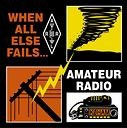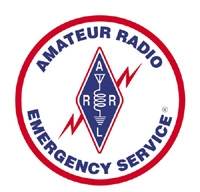
 SUMTER COUNTY
SUMTER COUNTY
Amateur Radio Emergency Services Association (ARES)
Communications Forms - ICS Forms
The Incident Command System (ICS) is a standardized approach to incident management which..
* Enables a coordinated response among various agencies
* Establishes a common system for planning and managing resources.
* Allows for the integration of facilities, equipment, personnel, procedures, and communications operating within a common organizational structure (standardized job titles, organization structure, no 10 codes, .
There are numerous forms; however those listed below are the ones usually used by radio operators.
|
ICS 205 Communications Plan (Word fillable) |
Planners and/or team leaders |
|
ICS 211 Check-In/Out (Word fillable) |
Everyone |
|
ICS 213 Requisition/Message (Word fillable) |
Everyone, especially radio operators |
|
ICS 214 Personal/Unit Log ((Word fillable) |
Everyone |
|
ICS 219-2 Resource Status
Card
|
Checking out equipment |
|
ICS 309 Communications Log (Word fillable) |
Everyone, companion to ICS 213 |
Background on Incident Command System (ICS)
The ICS concept was formed in 1968 at a meeting of Fire Chiefs in Phoenix, Arizona. The program was built primarily to be similar to the management hierarchy of the US Navy and it was mainly for fire fighting of wildfires in California and Arizona. During the 1970's, ICS was fully developed during massive wildfire suppression efforts in California and following a series of catastrophic wildfires in California's urban interface. Property damage ran into the millions, and many people died or were injured. Studies determined that response problems often related to communications and management deficiencies rather than a lack of resources or failure of tactics.
Weaknesses in incident management were often due to:
-
Lack of accountability, including unclear chains of command and supervision.
-
Poor communications due to both inefficient uses of available communications systems and conflicting codes and terminology.
-
Lack of an orderly, systematic planning process.
-
No predefined methods to integrate inter-agency requirements into the management structure and planning process effectively.
-
Freelancing by individuals with specialized skills during an incident without coordination with other first responders.
-
Lack of knowledge with common terminology during an incident.
Emergency Managers determined that the existing management structures - frequently unique to each agency - did not scale to dealing with massive mutual aid responses involving dozens of distinct agencies and when these various agencies worked together their specific training and procedures clashed. As a result, a new command and control paradigm was collaboratively developed to provide a consistent, integrated framework for the management of all incidents form small incidents (i.e. EMT response to stroke) to large, multi-agency emergencies.
Despite the recognition that there were incident or field level shortfalls in organization and terminology, there was no mention of the need to develop an on the ground incident management system like ICS. Most of the efforts were focused on the multi-agency coordination challenges above the incident or field level. It wasn’t until 1972 when Firefighting Resources of Southern California Organized for Potential Emergencies (FIRESCOPE) was formed that this need was recognized and the concept of ICS was first discussed. Also, ICS was originally called Field Command Operations System.
ICS became a national model for command structures at a fire, crime scene, or major incident. ICS was used in New York for the first terrorist attempt on the twin towers in the 1990's. On March 1, 2004, the Department of Homeland Security, in accordance with the passage of Homeland Security Presidential Directive 5 (HSPD-5) calling for a standardized approach to incident management amongst all federal, state, and local agencies, developed the National Incident Management System (NIMS) which integrates ICS. Additionally, it was mandated that NIMS (and thus ICS) must be utilized to manage Emergencies in order to receive federal funding.
The Superfund Amendment and Re-authorization Act, Title III mandated that all first responders to a hazardous materials emergency must be properly trained and equipped in accordance with 29 CFR 1910.120(q) , which represents OSHA's recognition of ICS.
HSPD-5 and thus the National Incident Management System came about as a direct result of the terrorist attacks on September 11, 2001, which created numerous All-Hazard, Mass Casualty, multi-agency incidents. However, it was not until after Hurricane Katrina before lots of progress was made on ICS.
Today, all levels of government are required to maintain differing levels of ICS training and private sector organizations regularly use ICS for management of events. ICS is widespread in use from law enforcement (traffic accidents, parades, etc.) to every-day business (healthcare/ hospitals, schools, public works, businesses supporting the previous), as the basic goals of clear communication, accountability, and the efficient use of resources are common to incident and emergency management as well as daily operations. ICS is mandated by law for all Hazardous Materials responses nationally and for many other emergency operations in most states.
In practice, virtually all EMS and disaster response agencies, i.e. CERT, Medical Reserve Corp, American Red Cross, Salvation Army, Catholic Charities, Methodist UMCOR, Southern Baptist DR, and others, utilize ICS, in part after the United States Department of Homeland Security mandated the use of ICS for emergency services throughout the United States as a condition for federal preparedness funding. As part of FEMA's National Response Plan (NRP), the system was expanded and integrated into National Incident Management System (NIMS).
Last Update: 06/28/2018 © Copyright Sumter County ARES. All Rights Reserved.